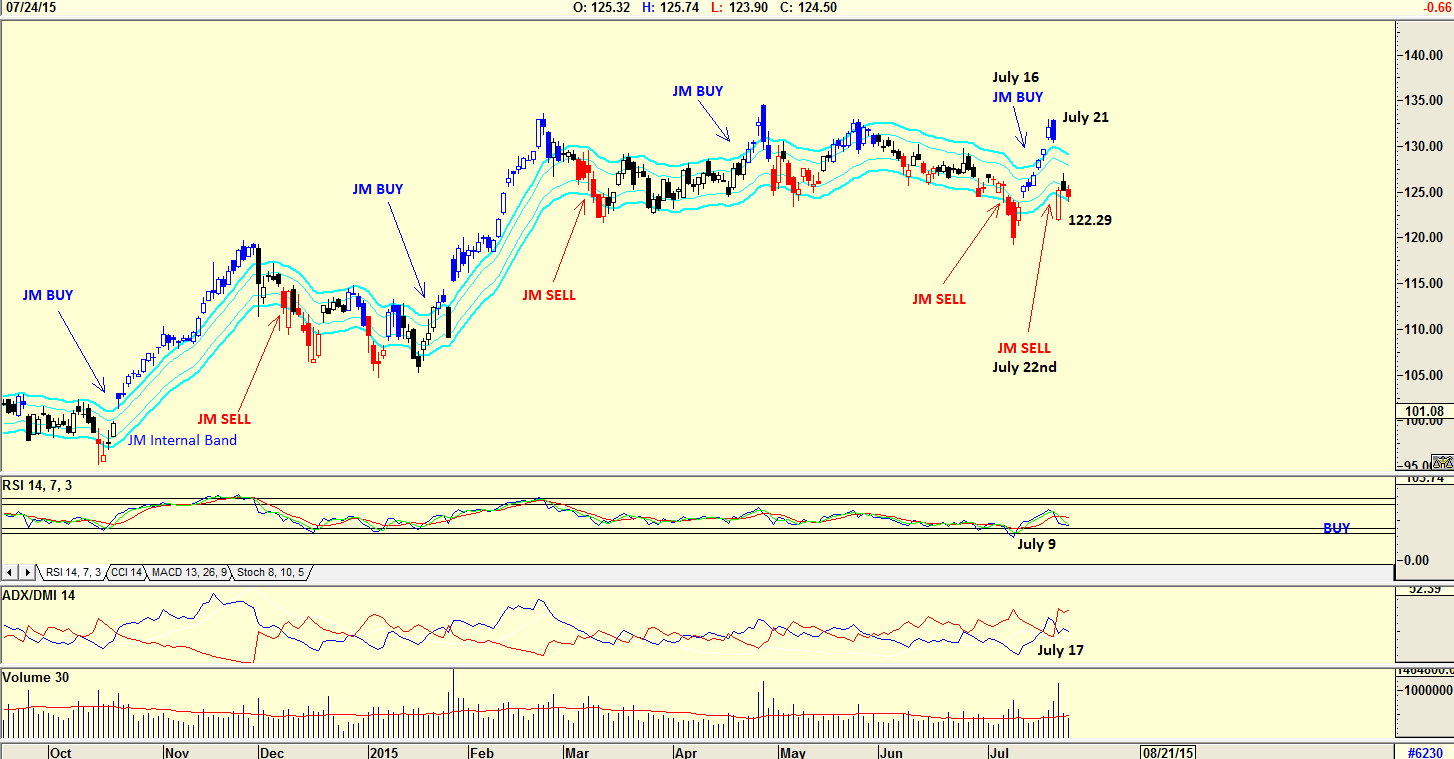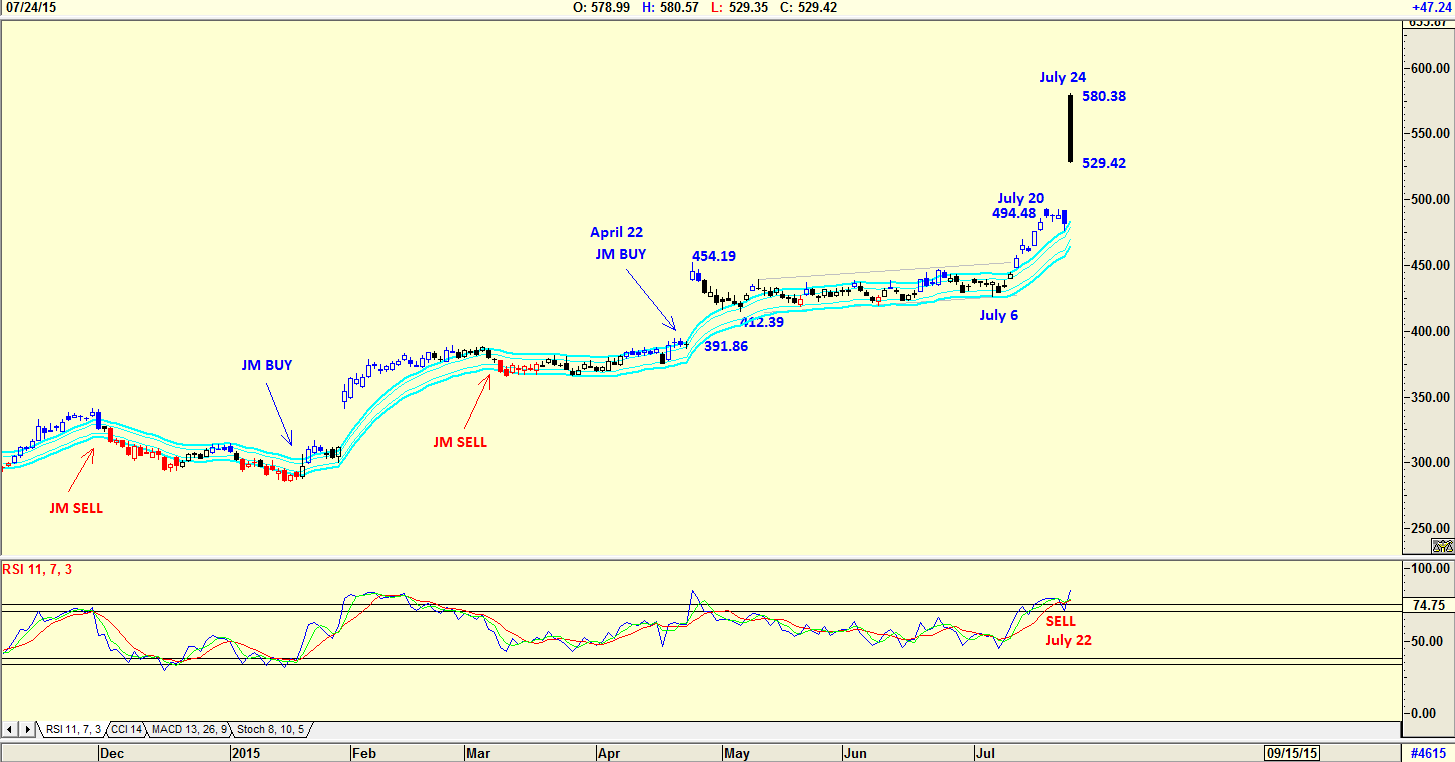
HOT TOPICS LIST
- MACD
- Fibonacci
- RSI
- Gann
- ADXR
- Stochastics
- Volume
- Triangles
- Futures
- Cycles
- Volatility
- ZIGZAG
- MESA
- Retracement
- Aroon
INDICATORS LIST
LIST OF TOPICS
PRINT THIS ARTICLE
by Koos van der Merwe
Should you buy shares before a quarterly report is announced and then sell it right before the announcement?
Position: Sell
Koos van der Merwe
Has been a technical analyst since 1969, and has worked as a futures and options trader with First Financial Futures in Johannesburg, South Africa.
PRINT THIS ARTICLE
TECHNICAL ANALYSIS
Do You Sell Before Results Are Announced?
08/05/15 01:31:13 PMby Koos van der Merwe
Should you buy shares before a quarterly report is announced and then sell it right before the announcement?
Position: Sell
| This is a strategy followed by many traders, and has proved profitable. But then there are many who follow the fundamental performance of a company explicitly, and their "gamble" so to speak becomes less of an uncertainty. However, as a technical analyst and chartist, do you take that gamble or take your profits before the announcement? Let us look at two shares that recently announced quarterly results. |

|
| Figure 1. Daily Chart Of Apple, Inc. (AAPL). Even though the company announced strong results, lack of enthusiasm in the sales figures of the Apple Watch disappointed investors. |
| Graphic provided by: AdvancedGET. |
| |
| In Figure 1 you see a chart of Apple, Inc. (AAPL). On July 24, 2015 AAPL released earnings for Q3 of the fiscal year 2015 which ended June 27, 2015. Once again AAPL posted a record third quarter with strong sales of most of its products. However, they failed to report Apple iWatch sales and that was not pleasing to many. Shares of AAPL fell down and stayed down the next morning as investors seemed disappointed by another set of record breaking results and the lack of fireworks over Apple iWatch sales figures. As in the past, the CEO Tim Cook did not give an enthusiastic future prediction for the company's results, causing the share price to drop dramatically in after-hours trading. The chart in Figure 1 is a daily chart of AAPL showing a JM internal band. A JM internal band is a 15-period simple moving average offset by 2% positive and 2% negative. A move above the upper band is a buy signal and a move below the lower band a sell signal. The chart shows that on July 16, 2015 before the earnings report, the share price moved above the upper band suggesting a buy. However, on July 22, 2015 after quarterly results were released, the share price fell on a gap to $122.29, and by falling below the lower band, suggested a sell signal. Note that the relative strength index (RSI) suggested a buy on July 22, 2015 with the ADX/DMI suggesting a buy on July 17, 2015. Note how the price of the share fell on July 21, 2015 a day before the quarterly results were released, a trading strategy used by many traders. |

|
| Figure 2. Daily Chart Of Amazon.com Inc. (AMZN). The company reported strong earnings and enthusiasm about future growth and this was enough to send stock prices soaring. |
| Graphic provided by: AdvancedGET. |
| |
| With Amazon.com, Inc. (AMZN) however, things were different. On July 23, 2015, AMZN shares jumped 15% after the company beat second-quarter earnings expectations. "The teams at Amazon have been working hard for customers," the CEO Jeff Bezos said. In other words, Mr. Bezos was enthusiastic for the future of the company citing the launch of Amazon Business and Prime same day delivery. The chart in Figure 2 shows that a JM Internal Band buy signal was given on April 22, 2015. The share price jumped from $391.86 to $454.19 on a gap. From that price the share dropped over eight days to fill the gap at $412.39, and then traded in a sideways pattern until July 6, 2015 when it started rising as traders bought the share ahead of its quarterly report on July 23, 2015. Note how the share price started dropping as traders took profits on July 20, 2015. Also note how the share price jumped on a gap on July 24, 2015 to $580.38 and then fell to $529.42 The RSI gave a sell on July 22, 2015 and the share price dropped ahead of the quarterly results. The strategy is to buy a stock a month before a quarterly report, of a share you know could be a winner and then sell the share before the announcement is made. With AAPL shares, this worked perfectly because the share price dropped dramatically after the report. With AMZN however, you could have scored better had the share been held. The solution? Follow the strategy and be satisfied with the winnings. |
Has been a technical analyst since 1969, and has worked as a futures and options trader with First Financial Futures in Johannesburg, South Africa.
| Address: | 3256 West 24th Ave |
| Vancouver, BC | |
| Phone # for sales: | 6042634214 |
| E-mail address: | petroosp@gmail.com |
Click here for more information about our publications!
Comments

|

Request Information From Our Sponsors
- StockCharts.com, Inc.
- Candle Patterns
- Candlestick Charting Explained
- Intermarket Technical Analysis
- John Murphy on Chart Analysis
- John Murphy's Chart Pattern Recognition
- John Murphy's Market Message
- MurphyExplainsMarketAnalysis-Intermarket Analysis
- MurphyExplainsMarketAnalysis-Visual Analysis
- StockCharts.com
- Technical Analysis of the Financial Markets
- The Visual Investor
- VectorVest, Inc.
- Executive Premier Workshop
- One-Day Options Course
- OptionsPro
- Retirement Income Workshop
- Sure-Fire Trading Systems (VectorVest, Inc.)
- Trading as a Business Workshop
- VectorVest 7 EOD
- VectorVest 7 RealTime/IntraDay
- VectorVest AutoTester
- VectorVest Educational Services
- VectorVest OnLine
- VectorVest Options Analyzer
- VectorVest ProGraphics v6.0
- VectorVest ProTrader 7
- VectorVest RealTime Derby Tool
- VectorVest Simulator
- VectorVest Variator
- VectorVest Watchdog
